You’ll find the easiest and most productive container gardening vegetables in this list. There are plenty of fruits that you can grow in containers too. The crops we list here won’t just survive but will actually thrive when grown in a pot.
Many vegetables and fruits will produce more, grow faster and have less pests and diseases when grown in a container. Read on to find out which crops we’re talking about!
Not sure where to position your containers? Learn everything you need to know about starting your first veggie patch here.
1. Container Grown Tomatoes
Tomatoes love warm soil so it’s no wonder they do so well when grown in containers. They even grow well when planted upside down and allowed to cascade down from hanging baskets.
The best tomatoes for pots are sweet million cherry tomatoes because they are so prolific. But if you’re having trouble sun ripening your beefsteak tomatoes in the ground, grow them in a pot instead. The warm roots quickly ripen fruits and you won’t compromise size or quality growing them in a pot.
Tomatoes do best in 10-15 gallon pots with growing cages attached. Regular feeding, watering and training is a must if you want the biggest and best tasting tomatoes you’ve ever seen.
With proper care and attention, you will enjoy a bountiful harvest of delicious tomatoes from your containers.
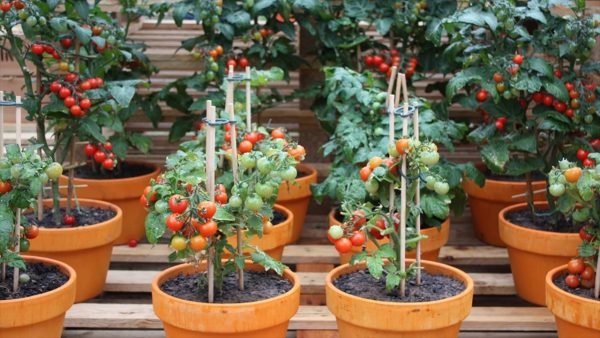
2. Basil Loves Being Grown In Pots
To grow the most fragrant and bushy basil, you’ve got to grow it in a container. Basil plants, especially the Italian Large Leaf Basil Variety, thrive in warm moist soil. Often the soil on the ground is too cold for them and they will grow slowly but not in a pot!
Basil plants love being grown in pots, use dark colored pots or sealed terracotta pots to grow the strongest basil you’ve ever tasted. In hot climates choose heat-resistant basil varieties like Tulsi Holy Basil which thrive in the scorching summer heat.
Pro tip: If your basil tastes bitter just apply a little baking soda to the soil and water in – the leaves will be super sweet in just a few days.
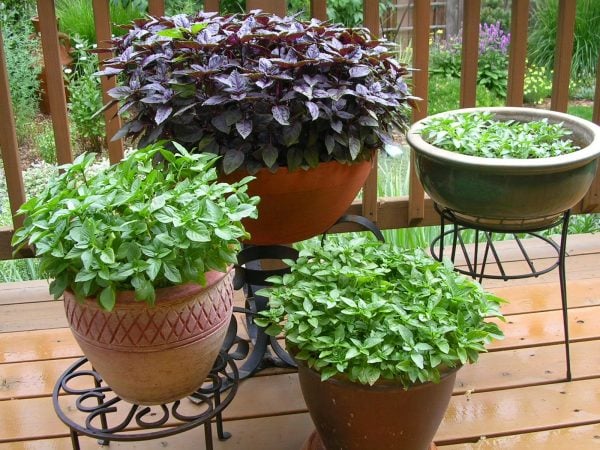
3. Zucchini And Squash Thrive In Containers
All types of squash grow very well in containers – our favorite is Black Beauty Zucchini because it is the most prolific. The containers make it easy to harvest your squash regularly too, which is important when you’re picking new fruits daily! Squash are very hardy and versatile plants – Round Squash are the easiest to grow.
It’s important to water your squash twice a day when throughout the growing season to get the biggest, tastiest and fastest-growing squash you’ve ever seen. Some days you can even watch them as they grow and expand before your eyes.
The most important thing with squash is making sure that you always pick the fruits before they get too big. If you miss even one fruit the plant will stop producing. That’s why I recommend growing the brightly colored Golden Squash for beginners so they are easy to harvest.
Other varieties that do well include:
- Italian Striped Zucchini
- Grey Squash
- Patty Pan Squash
- White Scallop Squash
- Opo Squash
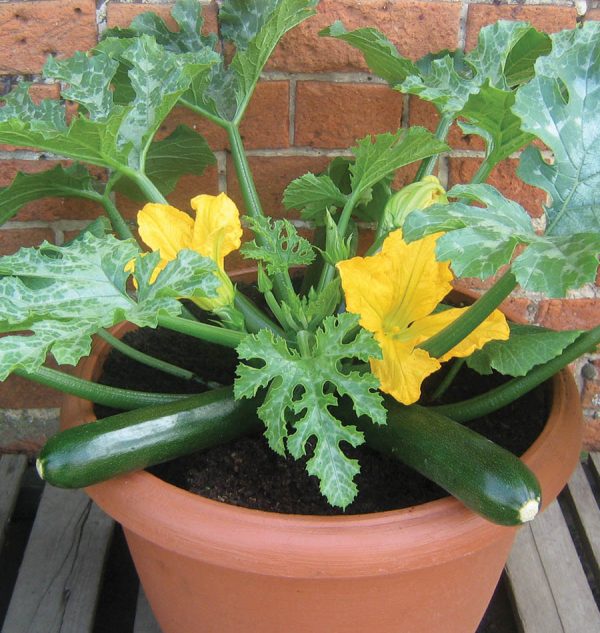
4. Parsley Grows Well In Pots
If you’re someone who loves using fresh parsley in the kitchen then grow it in a windowsill. Triple-curl parsley loves being grown in a container. The plant is very resilient and will spring back to life even after a few days of neglect. But to get the best results, keep the soil moist and harvest the oldest leaves first. Cut the lower branches right back to the base rather than just picking tops.
Parsley grows best in cooler temperatures, which makes it an awesome plant to grow inside during winter. Some varieties like the Italian Flat Leaf Parsley will grow well in warm climates and are less likely to bolt (go to seed early). It grows best between 40-80F and the cool temperatures will help strengthen the herbs flavor.
If you’ve got a big pot or use a lot of parsley then I recommend growing The Giant Of Italy variety as it is the fastest-growing.
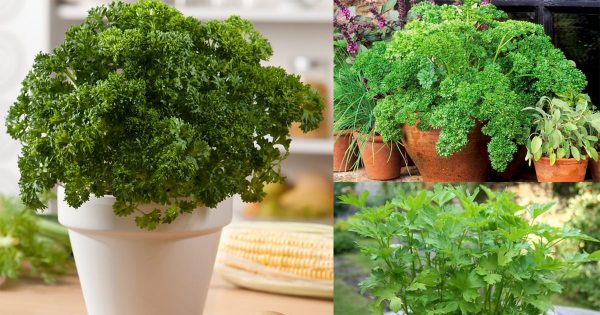
5. Strawberries Thrive In Tubs
Who doesn’t like strawberries? Imagining having more berries than you can eat. Or harvesting berries all year round with the Everbearing Ozark Beauty Variety.
Strawberries such as Sweet Charlie and Hirts Evie grow best and taste sweetest when grown in tubs or containers. In fact, all strawberries grow the fastest and produce the sweetest fruits when the soil is warm making them a perfect container plant.
If you’ve ever tried to grow strawberries in the ground you’ll know that it’s hard to beat the slugs to the fruits. This is easily solved when you grow them in a pot. Just use a metal container or copper tape around the rim of your pots. The slugs can’t touch the metal and will never get to your tasty strawberries.
Strawberry towers (vertical gardening) are the best way to grow strawberries in pots. We prefer the terracotta towers as they keep the soil warmer, but the plastic towers grow strawberries just as well (maybe just not as sweet!).
Another way of growing strawberries using hydroponics, method of growing plants without soil. The plants are grown in a water-based solution containing all the nutrients they need to grow. Strawberries Hydroponically can be grown indoors or outdoors and often yield larger. These are more sweeter than those grown in traditional soil-based methods.
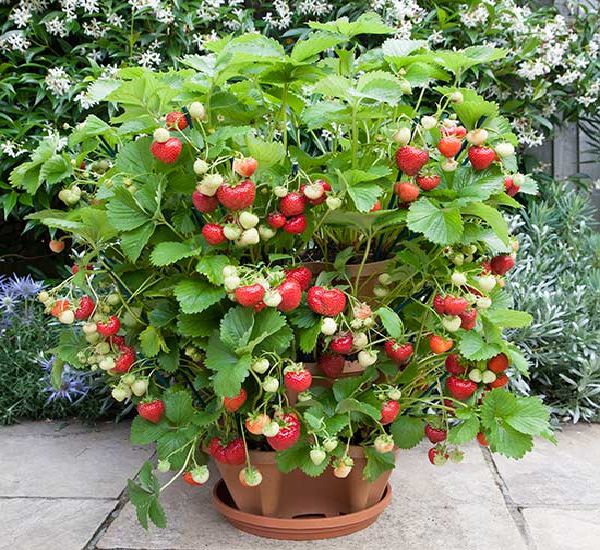
6. Grow Your Own Pineapples
I bet you never thought you could grow your own pineapple! These warm-season plants need very warm soil to thrive, which makes containers a sure bet. The easiest way to grow your own pineapple is to buy one from the store (although I prefer the Kona Sugarloaf variety)
Cut off the crown of your pineapple and then cut off all the fruit back to the base of the crown. Then remove the first few leaves around the base so you expose ¼ inch of the stem. Put this into a glass, changing the water daily for two weeks until roots form. When the pineapple has rooted, you can plant it out in your pot.
If you’re looking to grow a unique pineapple then try the White Jade Variety which has a completely different taste to the golden pineapple.
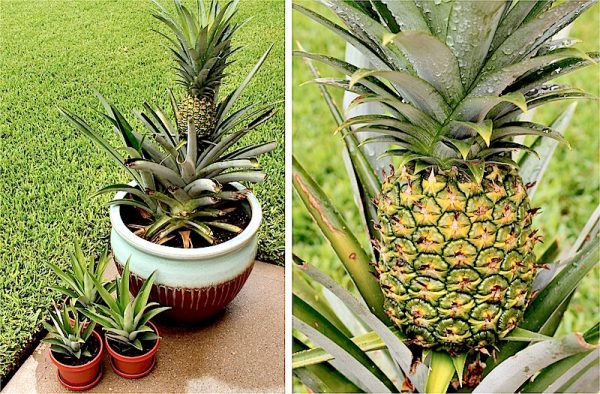
7. Cantaloupes Love Pots
Although many of you will think of the cantaloupe as being a ground covering melon, it is easy to grow in a pot. Cantaloupes thrive when the soil is warm and are easy to train up a trellis or along balustrading.
Just be sure to support the fruits with a sling as they get very heavy as they grow. The weight of the fruits can easily topple your pots over and ruin the crop – so make sure you prepare beforehand. For big juicy fruits Hales Best Jumbo is our favorite – although it will need strong support for the heavy melons.
Smaller plants that produce smaller melons like the Sweet Granite and Sweet’n’Early varieties are the best choices for containers.
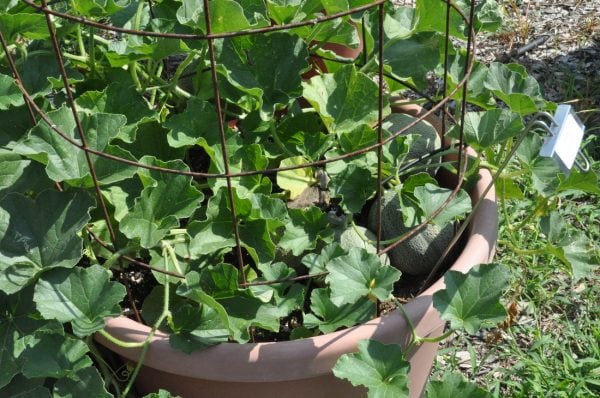
8. Oregano Grown In Planters
Another very popular plant for container gardens, oregano especially this Italian variety enjoys the warm soil of container gardens. The flavor and scent of the leaves only intensifies in warm weather. The plant can grow so well that it might smother out other plants in the same pot, so keep it well trimmed!
Oregano is very hardy and requires almost no maintenance or care to grow. It can even survive several days of forgetful watering. If you’re planting a few herbs in the same pot this Greek Oregano tends to grow “up” instead of “out” so it will be less likely to smother your plants.
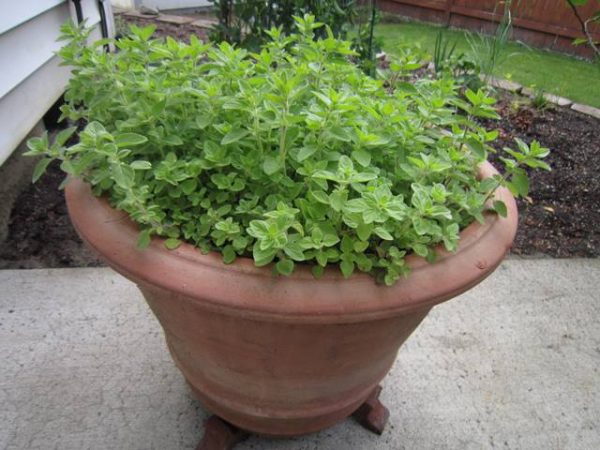
9. Rosemary Goes Wild In A Pot
If you want to grow the best rosemary you’ve ever tasted – you need to grow it in a pot. Rosemary is a fast growing plant that grows best in warm soil and some varieties like this Tuscan Blue look amazing when in flower. You need to be mindful to keep it well trimmed because it can quickly take over a shared planting.
For the most intense flavor, position your rosemary pots in the sunniest part of your garden and water them every 2-3 days. Your potting soil should also have a slightly alkaline pH as rosemary dislike acidic conditions.
Some varieties are perfect for window sills because they trail instead of growing upright like this Cascading Rosemary. If you live in a cold climate choose cold hardy varieties like this Arp Rosemary because other varieties won’t make it through the winter.
For gardeners with a lot of space then grow this large upright variety – although it does best in the ground rather than a pot.
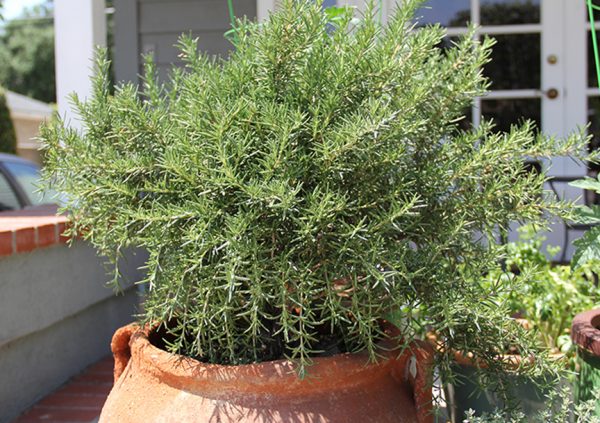
10. Peppers Turn Up The Heat In Small Spaces
Perhaps you’re chasing the hottest chili pepper you’ve ever tasted. Or maybe you just want to grow a bountiful harvest of green and red thai peppers. In either case you’ll get the best flavor (and heat) from peppers grown in pots.
The warm soil promotes fast growth and encourages capsaicin production which is the key component to fiery hot chilis like this Carolina Reaper. Peppers will ripen faster and have more flavor when grown in containers. Choose a 5 to 10 gallon pot for the best growth.
Their are varieties of peppers like Hungarian Wax Pepper, Aji Amarillo Peppers, Jimmy Nardello Chile Peppers, Fish Pepper, Cubanelle pepper, Chiltepin Pepper, etc.
Peppers will ripen faster and have more flavor when grown in containers.Click To TweetWant more vegetable growing ideas? Here’s a list of 27 incredible tips to grow more in small spaces.
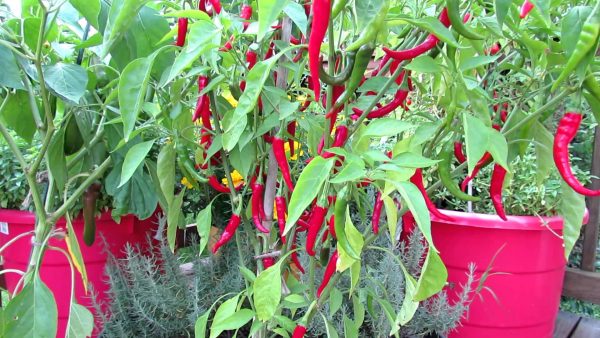
11. Chives Grow Well In Containers
Without a doubt chives are the hardiest vegetable you’ll ever grow. They’ll bounce back even after weeks of no water and they just keep growing even when you haven’t fertilized them in months.
Garlic chives have a strong and unique flavor that will add variety to your dishes. They are a great herb to grow and have available at moments notice. Just cut the stems back to the base and they’ll grow back in just a few days.
Chives will keep multiplying and spreading until they fill the container. So plant them by themselves or divide them once every few months.
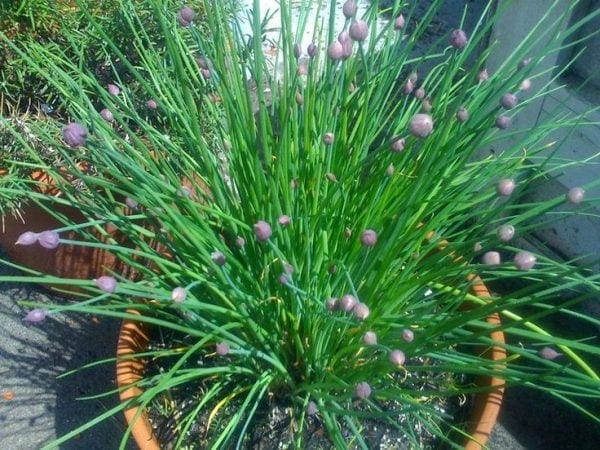
12. Spinach Packs a Bunch In A Small Area
Buying spinach by the bag is expensive. But plant this Bloomsdale spinach in a container and you’ll have an endless supply all season long. Spinach unlike many of the other plants we’ve listed doesn’t enjoy warm soil.
If the container gets too hot the spinach will bolt and you’ll lose your crop. So when you’re growing spinach make sure to position them in a shady area that doesn’t get too much afternoon sun.
Keep your spinach, especially the large leaf varieties such as Giant Noble, well watered and it’ll just keep growing and growing and growing!
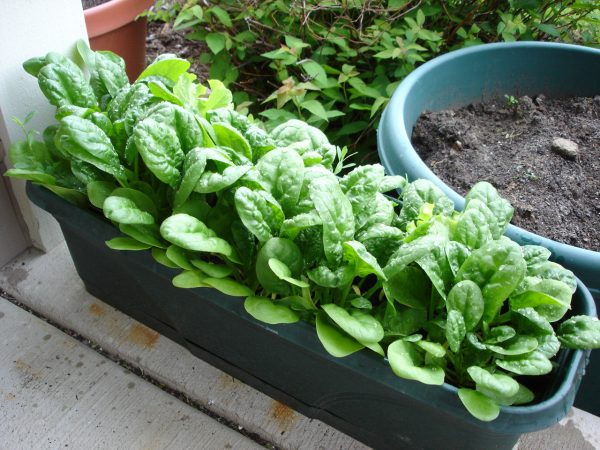
13. Thyme Loves Growing In Tubs
Another herb that does well in containers is Thyme. You can grow it indoors or outside, but it develops the most flavor when grown in full sun. Many container gardeners combine thyme, basil, oregano and chives into one container as a portable herb garden.
Terracotta pots are great for thyme, particularly this Silver Christmas variety because they help keep the soil dry. Thyme dislikes soil that is too wet so try and avoid overwatering. One drink every 2-3 days is all it needs to grow.
For something a little different try growing Woolly Thyme which has a fluffy puffy up leaf and a more astringent flavor.
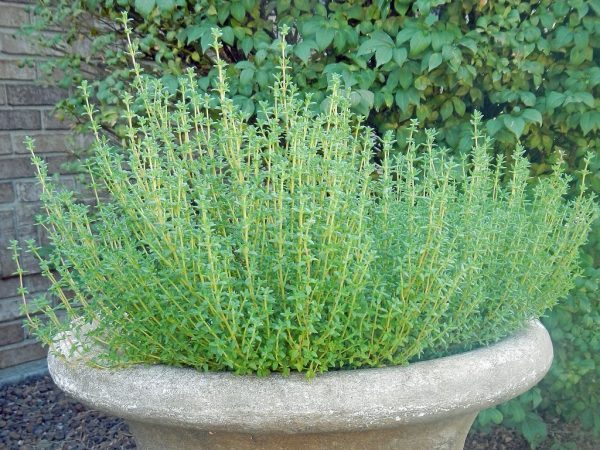
14. Container Grown Sage
Sage like thyme likes to grow in dry soil. Growing it in a pot ensures that you can properly manage the drainage and water requirements to get the best sage plants. If you want to intensify the flavor then position the Broadleaf Sage variety in a full sun location.
It grows best in direct sunlight which is why sage tends to become leggy when grown indoors for long periods. If your sage gets too leggy just cut it back to the base, give it a good soaking and move it outside. It’ll spring back to life in a few days with new growth and quickly return to it’s original size.
Pro Tip: White Sage is used for smudge sticks and aromatic oils but do not use it in your cooking as it contains more toxins than culinary sage.
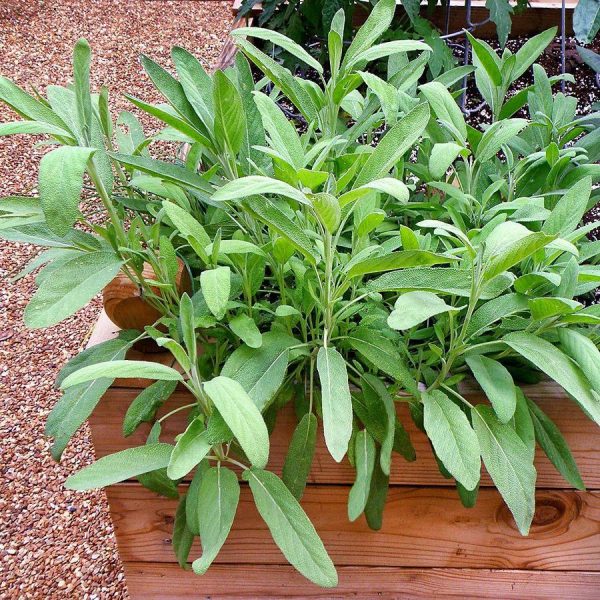
15. Training Cucumbers In Containers
Cucumbers are another easy to grow container vegetable. They enjoy the warm soil temperatures and grow quickly, producing plenty of cucumbers in a small space. This Straight Eight Cucumber is especially prolific in containers. You can also maximize their production by training them up a vertical support.
The best varieties to grow in containers are small cucumbers such as Lebanese cucumbers and pickling cukes. These varieties produce the most fruits in the smallest space.
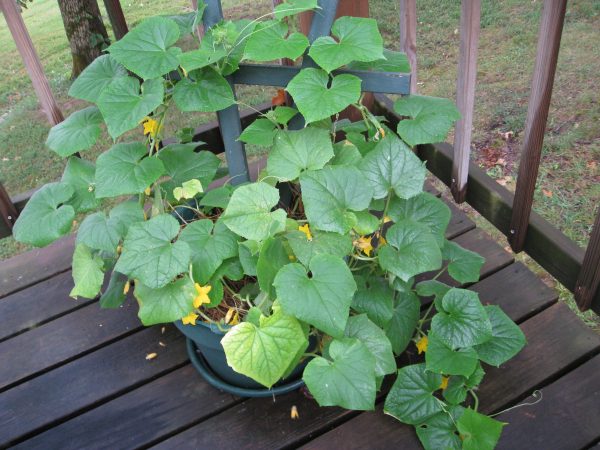
16. Kale Grown In Pots
Kale is great for container gardening because it is fast growing and prolific. You can grow five Tuscan kale plants in a 20” pot easily and they’ll provide you with all the kale you need. Blue Curled Kale prefers shade and cooler temperatures to grow so move the position of your pots in partial shade.
It’s best to water your kale plants regularly as dry soil will send them to seed and ruin your crop. Dry soil also makes the kale taste bitter and limits the nutrients that it can absorb into its leaves. Watering 2-3 times daily is recommended.
Some varieties like this Italian Kale grow well in warm climates but will still require lots of water so the leaves don’t turn bitter.
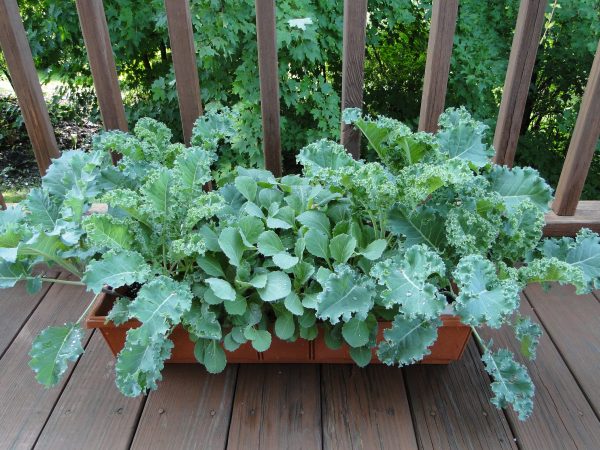
17. Container Grown Lettuce
Lettuce lends itself to container growing because it grows so quickly and produces lots of tasty greens in a small space. Look for continuous picking varieties so you can harvest the same plant over the entire growing season.
Some seed companies mix a dozen different seeds together into ‘salad mixes’ and these can be sown heavily into a pot and then cut as needed. The greens will quickly bounce back from being cut back and provide an endless supply of fresh greens for your family.
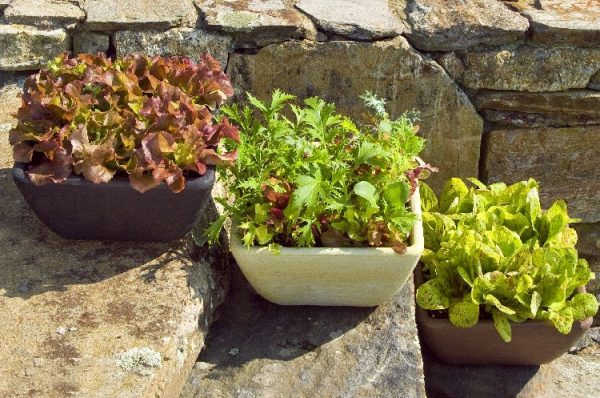
18. Radishes Grown In Small Spaces
Fast growing and super productive, Early Scarlet Globe Radishes are perfect for beginner container gardeners. They are super easy to grow. Just sow the seed and water. Four weeks later they’ll be ready to harvest.
The young leaves are great in salads when they are tender. Make sure you water your radishes every few days but try not to overwater them as this tends to split the roots (although it doesn’t affect the taste!)
For a bit of variety and color try growing these Easter Egg Heirloom Radishes or pick up an assortment of different Radish Varieties.
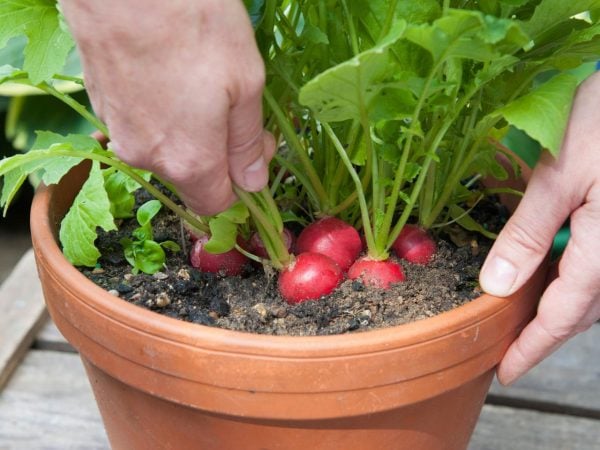
19. Potatoes In Tubs
Growing potatoes can be backbreaking work. First, you have to dig them into the soil and then you’ve got to mound them up as they grow. When it comes to harvest time you have to dig through all your dirt to find the potatoes.
Instead you can save yourself all that digging by growing Yukon Gold Potatoes in containers. Start with a little dirt in the bottom of a pot and keep adding more potting mix as the potato grows. By the time the potato reaches the top, your crop will be almost ready to harvest.
Wait until the tops die off and then turn your pot upside down to harvest all the potatoes easily. Or you can use one of these potato pots to harvest your potatoes as they grow.
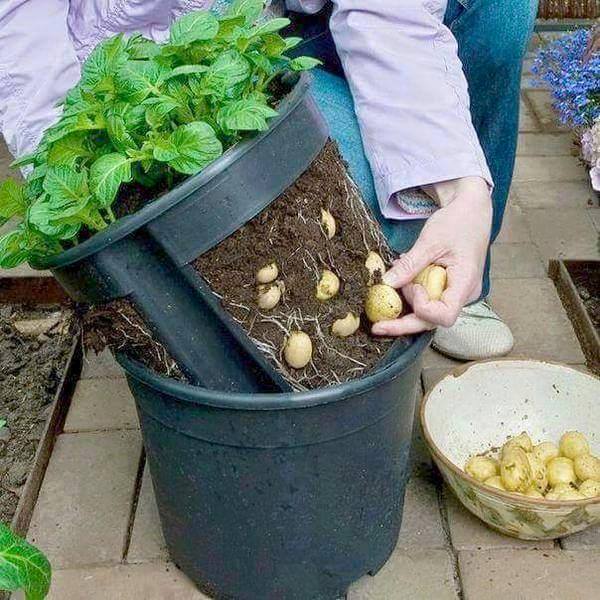
20. Growing Straight Carrots In Pots
Carrots are great to grow in pots. You can choose a light fluffy potting mix to ensure they grow long straight roots easily. Sow the seeds directly into the pot and do so thinly – carrots don’t like to be thinned out and will fork if you try!
You can experiment with different varieties of carrot, like you can grow Scarlet Nantes Carrots all year round if you keep them near the home where it is warm. Make sure you give them plenty of water throughout the growing season, infrequent watering is best usually once every 2 days.
You’ll know your carrots are ready when their tops start to push up above the soil.
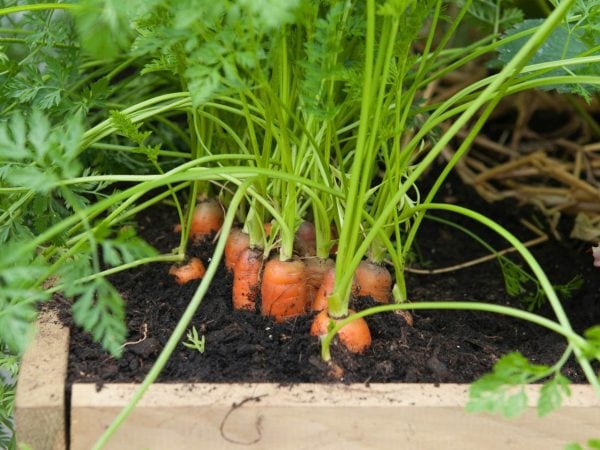
21. Beetroot Only Taste Sweeter In Containers
One of the easiest crops to grow in a container is beetroot. It can be sown directly from seed and grows quickly. You can harvest young beets after just 8 weeks and older beetroot around 12 weeks after sowing.
Don’t try and wait too long for the biggest root as after 12 weeks they start to become tough and bitter. Beets are great for kids because they can grow in so many colors, like these Rainbow Mixed Beets, and taste sweeter than many other vegetables so kids love them.
The best way to grow your beets is by using Beetroot Seed Tape so you get the perfect spacing. Beets planted too closely won’t form big juicy roots because they’ll be fighting each other for nutrients and water – so give your beets plenty of room!
Now, for those just stepping into gardening, greenhouse gardening offers a unique and fulfilling journey. It allows you to cultivate a diverse range of plants, shielded from the extremes of weather. As a beginner, mastering the basics of managing the internal climate – from temperature to light – is crucial for nurturing your plants effectively. If you are interested to know more on this, read our article on greenhouse gardening for beginners.
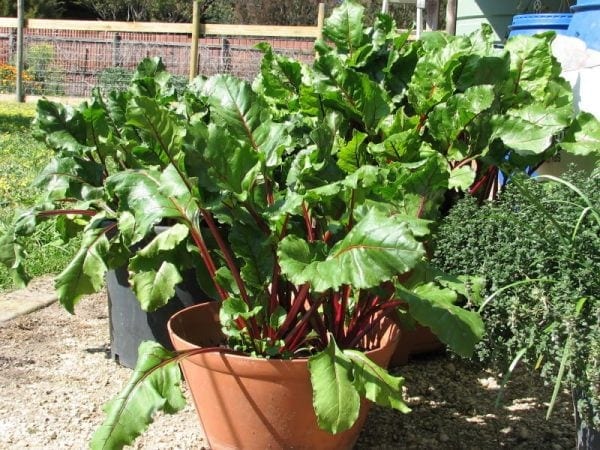
Want to learn more about planting the perfect veggie patch? Check out our free guide here.
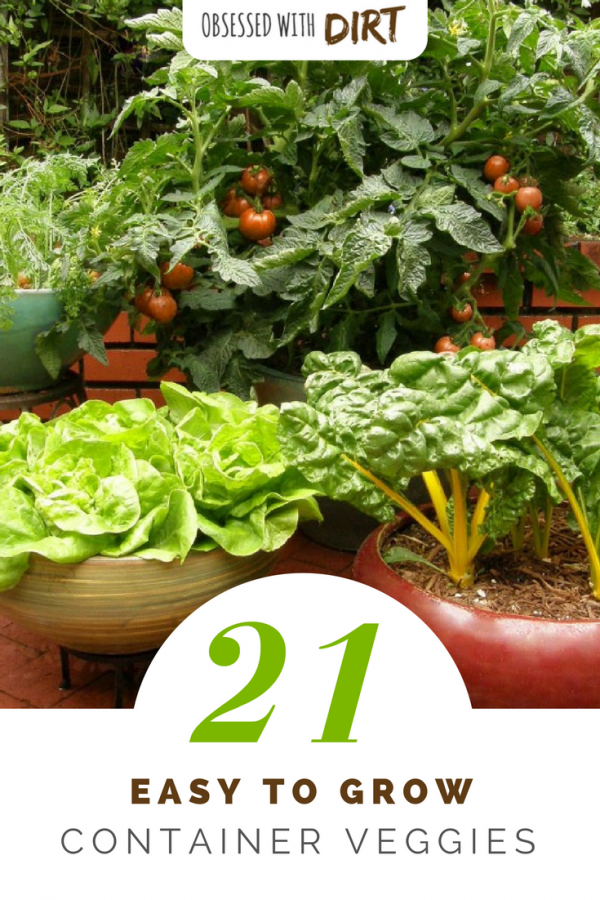
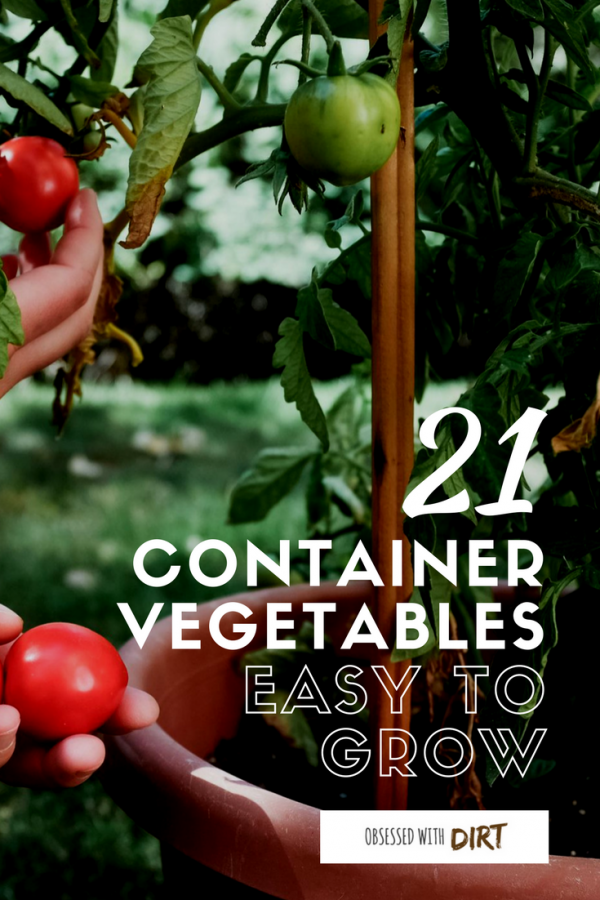
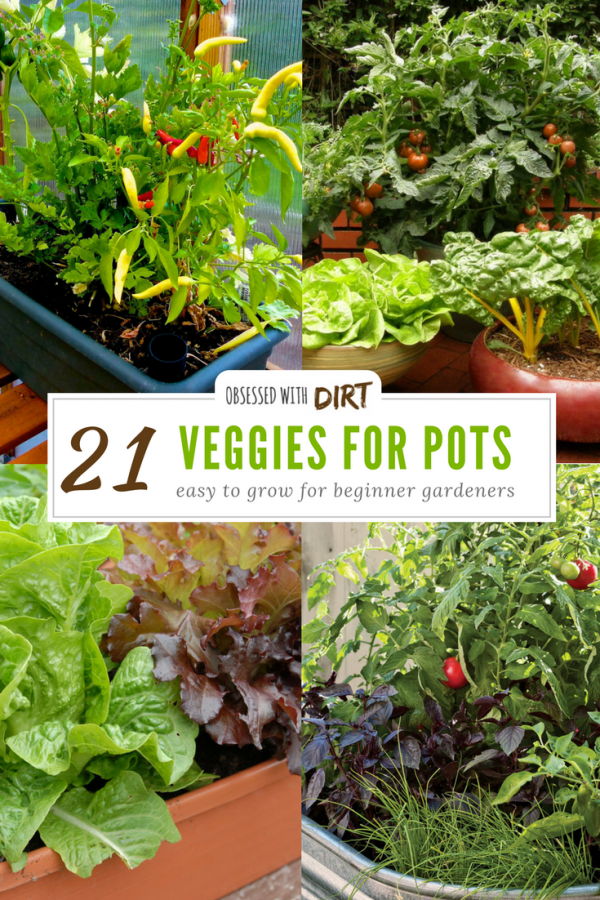
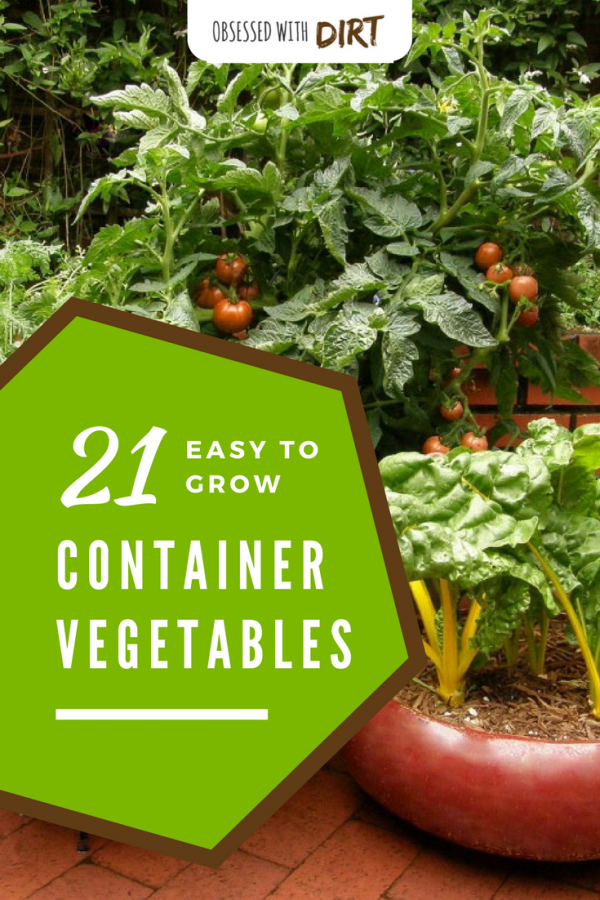
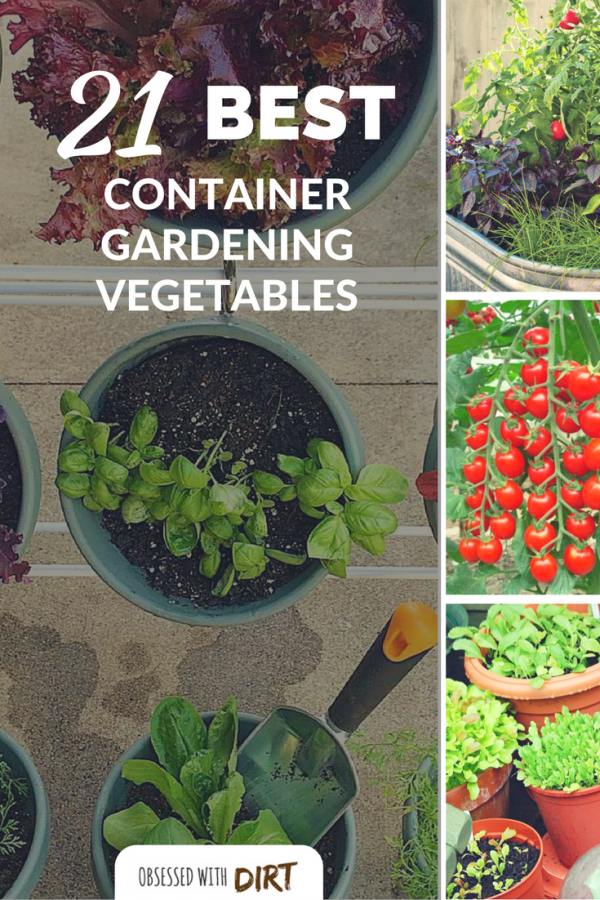
- WineCrisp Apples: History, Description, Uses & more… - February 13, 2025
- Wood Mulch: Everything You Should Know & More… - January 17, 2025
- Cosmic Purple Carrot: Description, Origins, Uses & More… - December 24, 2024

I’m so excited this my first container garden
Thanks so much for this!!! Such great info!!!! WHat about Romaine lettuce? Will it work in a pot?